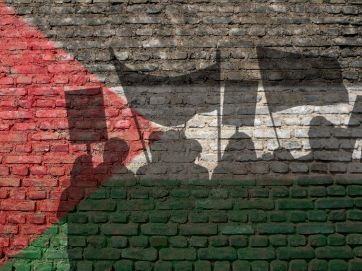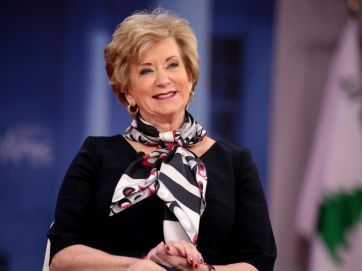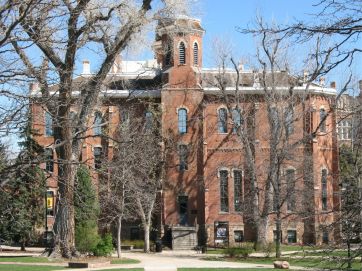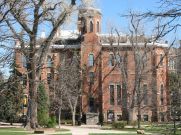Peter Wood's article originally appeared in Minding the Campus.
Robert Maranto and Mathew Woessner are not alone. They are two political scientists who assure us that leftist domination of the faculty does not mean that college students are coming away from their campuses indoctrinated in progressive ideology. Maranto and Woessner’s latest version of this argument was published in The Chronicle of Higher Education as “Why Conservative Fears of Campus Indoctrination Are Overblown.”
Their basic point is that students are “not ideologically pliable.” Their evidence for that comes from survey research that show “relatively minor” shifts in student political attitudes over four years, with “the typical student” becoming “slightly more progressive on social issues while becoming slightly more conservative on economic issues.”
I don’t doubt the integrity of their research or that of other social scientists who have gone looking for measurable evidence of such changes in student attitudes. In fact, for several decades social scientists have been looking at this question and for the most part coming up with answers similar to that of Maranto and Woessner.
But they, like many others, are profoundly mistaken. Their conclusions follow their research, but that research inevitably focuses on certain kinds of data, which unfortunately do not get to the heart of the problem.
In their Chronicle article, Maranto and Woessner reference The Still Divided Academy, a book published in 2011, which includes an analysis of “Students’ Political Values” based on the 1999 North American Academic Study Survey (NAASS). That eighteen-year-old data means something, but does it mean that today’s college students are barely touched by the forces of campus indoctrination?
In the 1999 survey, 45 percent of college students said they did not believe homosexuality is “an acceptable lifestyle.” The survey did, however, pick up a shift of seven percentage points in favor of acceptance of homosexuality by the senior year: a shift the authors interpreted as the students moving towards the views of their professors and administrators. The NAASS study has not been repeated, but we do have the annual survey conducted by the Higher Education Research Institute (HERI)at UCLA, which includes some relevant data. The HERI survey of college freshmen in 2015, for example, found 81.1 percent of freshmen at all baccalaureate institutions endorsed gay marriage.
That dramatic shift, from 45 percent opposed to homosexuality “as a lifestyle” to more than 80 percent favoring gay marriage, tells us nothing about whether colleges indoctrinate students. These were freshmen surveyed in 2015—mostly innocent about their professors’ attitudes. But the shift testifies to the need for caution in relying on 1999 figures to decipher today’s trends. It also testifies to the astonishingly rapid transformation of American youth during this period.
We don’t have very good grounds for thinking that college students today respond to the social and political cues of campus life in the way they did a generation ago. In fact, the opposite. The most recent HERI data from fall 2016 found “the fall 2016 entering cohort — of first-time, full-time college students — has the distinction of being the most polarized in the 51-year history of the Freshman Survey.” The year before, the HERI surveyors found that a third of the freshmen (33.5 percent) self-identified as liberal or “far left”—the highest percentage since 1973, the height of the Watergate scandal.
Anyone who has taught freshmen knows that their self-labeling is not necessarily the best indication of their political orientation. The 2015 HERI data yielded some other clues about the leftward orientation of these freshmen. A record 8.5 percent of these students said there was a very good chance they would participate in “student protests while in college,” i.e. they were ready to protest before they could possibly have any cause to do so.
HERI also found a record number (74.6 percent) of freshmen who said that “helping others in difficulty” was very important or essential to them. An orientation towards helping others sounds very good in the abstract, but that figure might also signal the degree to which activism aimed at advancing progressive ideas of “social justice” had become a baseline social attitude for late Millennials entering college.
The HERI data is full of other material that suggests that today’s entering college students bring with them dramatically different attitudes than the freshmen of yesteryear. Anyone interested in the sociology of college students will find it eye-opening. But HERI doesn’t resolve the question of whether or how much four years of college education changes students’ political and social attitudes.
That question has actually been a research topic for many years, perhaps best codified by Ernest T. Pascarella and Patrick T. Terenzini in a series of massive volumes, How College Affects Students. I have relied on Ernest T. Pascarella and Patrick T. Terenzini’s Volume 2: A Third Decade of Research, published in 2005, but there is 2016 edition with new editors, How College Affects Students: 21st Century Evidence that Higher Education Works, Volume 3. Pascarella and Terenzini, synthesizing the work of numerous other scholars, reach some interesting conclusions for students in the 1990s:
- “Freshmen-to-senior year shifts in political identification were associated with the peer and faculty environments of the institutions attended.”
- The shifts “were more than mere reflections of changes occurring in the larger society.”
- The shifts were not simply “artifacts” of the attitudes students brought with them to college, and they couldn’t be explained as part of “normal, maturational processes.”
As often happens when social science researchers roll up their sleeves and dig deep into a problem, these researchers discovered the obvious. Of course, “peer and faculty environments” shape students. If anyone continues to doubt that, I recommend What Does Bowdoin Teach? How A Contemporary Liberal Arts College Shapes Students (2013), the top-to-bottom ethnography that my colleague Michael Toscano and I wrote about the “peer and faculty environment” at one of the nation’s top-rated liberal arts colleges.
What that study showed more than anything is that Bowdoin’s left-wing bias was all pervasive. It wasn’t conveyed just by a few dozen hard-core leftist faculty members, though they did their part. It was embedded in the curriculum as a whole, residence life, extra-curricular activities, pronouncements from the college president, self-declared college crises, invited speakers, student awards, and more. And just as important, that bias was made to seem normal by the absence or near absence of alternative views. It doesn’t feel like “bias” if you are surrounded with people who all agree. The courses not offered, the professors not appointed, the speakers not invited, the student clubs that are not formed: the nots are the real key to campus bias, especially because they are usually invisible to the students.
At one Bowdoin event, a student stood up and half-in-resentment, half-in-perplexity, challenged me: “We have everything we could possibly want at Bowdoin. What’s missing?” He had absolutely no clue as to what ideas and opinions existed outside the “Bowdoin bubble.”
In such an environment, even those who call themselves dissenters tend to absorb the premises of the prevailing view. They will quibble about details and typically fail to realize how much they have conformed to the campus Zeitgeist. At Bowdoin, we found “conservative” students who were wholly taken in by the premises of multiculturalism and diversity and perfectly supportive of efforts to muzzle free speech.
Rendering Much of the World Invisible
This is where Maranto and Woessner go most wrong. “Indoctrination”—if that is the right word—is not mainly about the domination of academic fields by leftist professors. That happens, and it is part of the problem. But the larger problem is a campus culture that renders much of the world invisible.
That is not to say the college students today are blankly unaware that a great many Americans hold views at odds with their own. They know Donald Trump was elected President and that many millions of Americans voted for him. And progressive ideology provides a whole gallery of stock villains with which to picture the oppressors and those who are not yet “woke.” The Alt-Right, the cis-gendered privileged, the one-percenters, and so on are the cartoons that take the place of any need to understand conservative ideas.
This doesn’t make every college student an incipient leftist. Probably the most common political orientation among college students is a soft libertarianism that tolerates anything that doesn’t get in the way of the student’s preferred social activities. These students have no fondness for the hard left radicals with their Bias Response Teams, Title IX tribunals, protests, and occupations, but neither do they have much interest in putting up a fight. The soft libertarians seldom give a thought about the longer-term consequences of the left’s initiatives, and they are entirely satisfied with the consumerist curriculum they have been offered.
To my way of thinking, this libertarian silent majority on campus has created the condition in which a radicalized minority can exert its tyranny. College administrators don’t worry about the leave-me-alone crowd. But they are ever eager to placate Mattress Girl, Black Lives Matter, and the students who want to run Charles Murray into the Vermont forest.
So, pace Maranto and Woessner, no, conservative fears of campus indoctrination are not overblown. Sometimes conservatives over-simplify their case by focusing too much on the wild declarations of extremist professors or the exclusion of conservative faculty members. But taken all in all, contemporary American higher education does indoctrinate students in progressive ideology. And it does it so well that most of the graduates don’t even realize it.
Image: Student in Class (3618969705).jpg by Tulane Public Relations // CC BY 2.0













